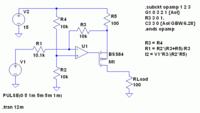jonnybgood
Full Member level 4
Can you suggest some opamps to be used in a Howland current source to output 50mA comfortably?
This is the circuit; https://www.indiabix.com/electronics-circuits/howland-current-source/
thanks
This is the circuit; https://www.indiabix.com/electronics-circuits/howland-current-source/
thanks
Last edited:
